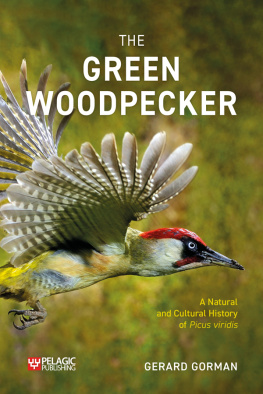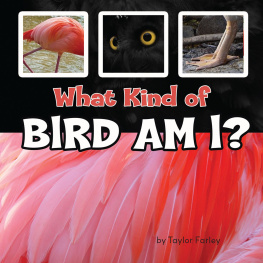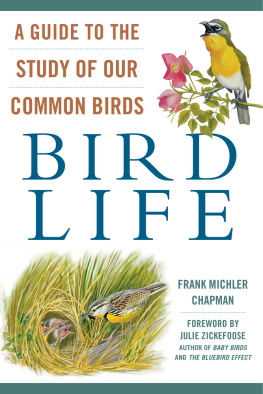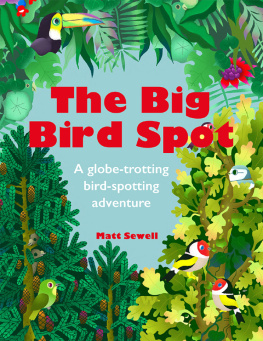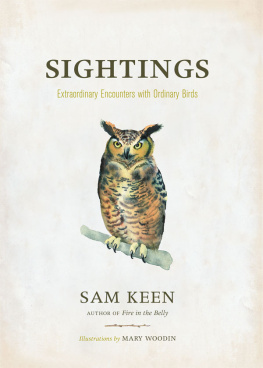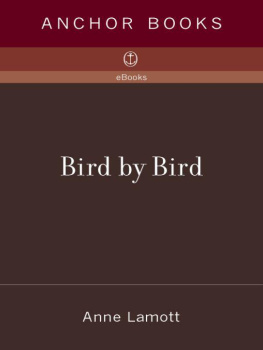Copyright 2005 by Tim Gallagher
Afterword copyright 2006 by Tim Gallagher
All rights reserved
For information about permission to reproduce selections from this book, write to or to Permissions, Houghton Mifflin Harcourt Publishing Company, 3 Park Avenue, 19th Floor, New York, New York 10016.
www.hmhco.com
The Library of Congress has cataloged the print edition as follows:
Gallagher, Tim.
The grail bird : hot on the trail of the ivory-billed woodpecker / by Tim Gallagher
p. cm.
Includes bibliographical references.
ISBN 0-618-45693-7
1. Ivory-billed woodpecker. I. Title.
QL696.P56G35 2005
598.7'2dc22 2005042792
ISBN -13: 978-0-618-70941-0 (pbk.)
ISBN -10: 0-618-70941-X (pbk.)
e ISBN 978-1-328-85911-2
v1.0417
For my wife, Rachel,
and my children, Railey, Clara, Jack,
and Gwendolyn
I wish, kind reader, it were in my power to present to your minds eye the favorite resort of the Ivory-billed Woodpecker. Would that I could describe the extent of deep morasses, overshadowed by dark cypresses, spreading their sturdy, moss-covered branches, as if to admonish intruding man to pause and reflect on the many difficulties which he must encounter, should he persist in venturing farther into their almost inaccessible recesses, extending for miles before him, here and there the mossy trunk of a fallen and decaying tree, and thousands of creeping and twining plants of numberless species! Would that I could represent to the dangerous nature of the ground, its oozing, spongy, and miry disposition, although covered with a beautiful but treacherous carpeting composed of the richest mosses, flags, and water lilies, no sooner receiving the pressure of the foot that it yields and endangers the very life of the adventurer, whilst here and there, as he approaches an opening that proves merely a lake of black muddy water, his ear is assailed by the dismal croaking of innumerable frogs, the hissing of serpents, or the bellowing of alligators! Would that I could give you an idea of the sultry pestiferous atmosphere that nearly suffocates the intruder during the meridian heat of our dog days in those gloomy and horrible swamps! But the attempt to picture these scenes would be in vain. Nothing short of ocular demonstration can impress any adequate idea of them.
J OHN J AMES A UDUBON
The Former Realm of the Ivory-bill
Preface
I think Ive always been the kind of person who gets caught up in obsessive quests, most of which seem to involve birds. Im naturally curious, and I love a challenge. I remember for a time in high school I wanted to find out everything there was to know about the Richardsons merlin, a pale subspecies of merlin that breeds only on the wide-open prairies of southern Canada and a few places in the northern United States. I read everything I could find about this small falcon, sometimes traveling to university libraries and digging through ornithological tomes from the nineteenth century. I loved the detective work and the sense of mystery about it.
Finally one summer I talked my friend Steve Nadeau, who owned a small pickup truck, into driving north into Canada with me to search for these birds. It took a couple of days to get there from southern California, where we lived, and we spent several weeks camping out, living on the cheap, trying to figure out where the falcons were.
Of course, by that time the places we visited were nothing at all like what the early ornithologists described. In one case, what had been a wooden stockade surrounded by wilderness was now a thriving city. But Steve and I persevered, and after a couple of weeks we found a pair of the birds nesting in an old crows nest in a lone stand of trees out on the prairie.
Ill never forget the sense of triumph, the intense joy we felt as we were hiking to those treesseemingly the thousandth clump of trees we had investigated on the tripand we suddenly saw the male flying out to investigate, calling as he circled above us. It was so hard to believe, so unimaginable that we had succeeded. If I werent hooked on quixotic quests before that moment, I certainly was after it.
That was a lot of journeys ago. I have since taken part in many research projects and expeditions. I have traveled the backcountry of Iceland, roping down lofty cliffs to gyrfalcon nests. Ive gone on expeditions to Greenland to study peregrine falcons, gyrfalcons, and other arctic birdson one trip, traveling north along the west coast of this huge island in an open boat between icebergs as large as buildings. And I once took part in a bowhead whale census off the north slope of Alaska. We camped on the ice, five miles offshore, and used hydrophone arrays to pinpoint each calling whale as well as visual sightings to establish the number of animals migrating pastat the same time as Inuit hunters were paddling among the whales in their sealskin boats, trying to harpoon them.
Ivory-billed woodpeckers have been a longtime obsession with me. I first became interested in them in the early 1970s, when I read a Life magazine article about John Denniss sightings of the species in the Big Thicket of east Texas. Many scientists later discounted his sightingswhich seems to be what usually happens when people claim to have seen an ivory-bill. But it was enough to pique my interest and get me started on learning more about the bird.
I was able to control my budding obsession with this bird for many years. I became involved in the peregrine falcon reintroduction effort, which took up most of my time. But every so often this obsession would flare up again, and I would start dreaming about swamps and imagining what it would be like to find an ivory-bill. The bird is so iconic: big, beautiful, mysteriousa symbol of everything that has gone wrong with our relationship to the environment. There is such a sense of finality about extinction. I thought that if someone could just locate an ivory-bill, could prove that this remarkable species still exists, it would be the most hopeful event imaginable: we would have one final chance to get it right, to save this bird and the bottomland swamp forests it needs to survive.
Like many ivory-bill seekers, my passion flared to a fever pitch when a Louisiana turkey hunter emerged from the swamp in the spring of 1999 with a tale about a pair of large woodpeckers with field marks that exactly fit those of the ivory-bill. I think everyone who admires the bird must have breathed a collective sigh of relief: The ivory-bill is okay; it miraculously survived, and now if we can just maintain enough suitable habitat for it, the species will slowly recover.
What an amazing thoughtand how crushing when no one was able to find the birds during subsequent searches. I think thats what really got me going. I didnt want to give up that dream. I didnt want to accept that the ivory-bill was gone forever. I started looking for people who had had direct experience with the ivory-bill to see if I could glean anything from their knowledge that would help me in my search for this bird. I interviewed dozens of people, a few of whom I felt had definitely seen ivory-bills, many of whom clearly had not. I read every obscure reference to the bird that I could find. It was like my teenage search for the Richardsons merlin magnified a hundredfold. Eventually I hit the swamp myself, exploring potential ivory-bill habitats across the South. What follows is a personal narrative of that journeyone that I am still embarked on.


